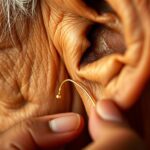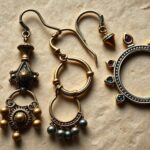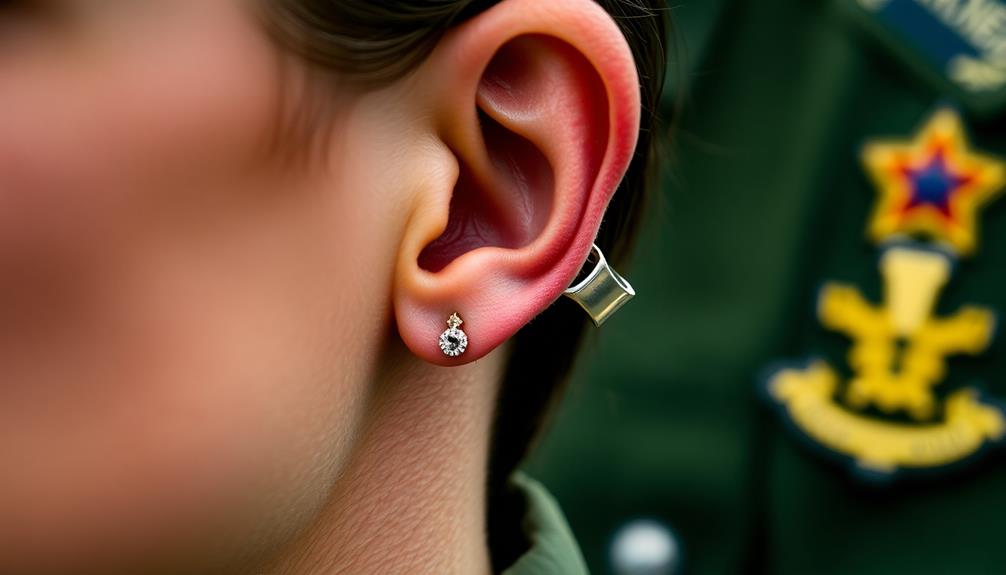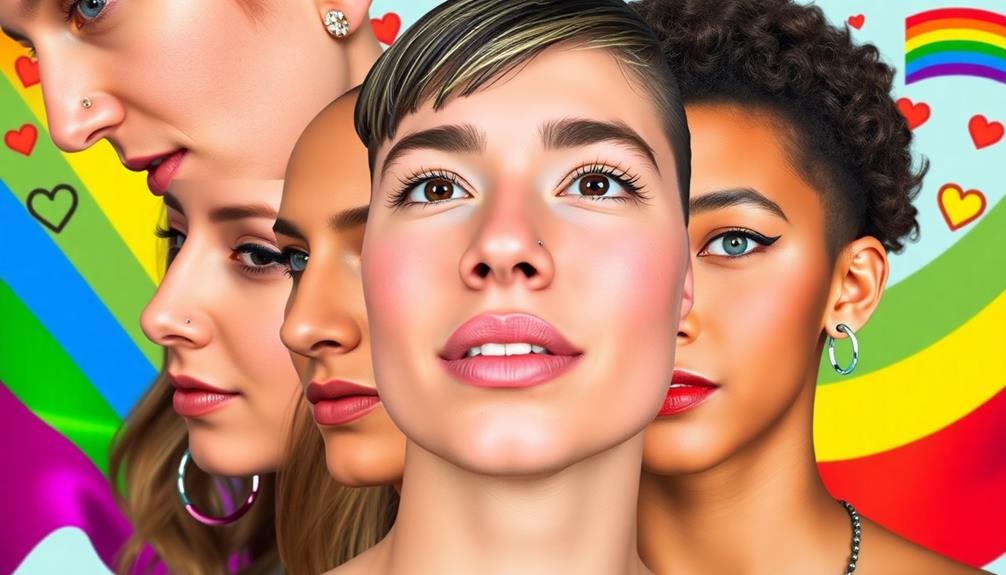When you explore religious views on body piercings, you'll find diverse beliefs across faiths. Christianity shows varied opinions, with some denominations embracing minimal ear piercings while others discourage them for modesty. Hinduism views nose piercings as symbols of beauty and marital status, deeply rooted in tradition. In Islam, body piercings like earrings are generally acceptable, emphasizing modesty. Indigenous cultures often use piercings to mark significant life stages. Each faith's perspective reflects unique cultural identities and values, revealing the complex relationship between spirituality and body art. The fascinating stories behind these practices will intrigue you even more!
Key Takeaways
- Christianity has varied views on piercings, with some denominations discouraging them while others see them as personal expression and art.
- In Hinduism, nose piercings symbolize beauty and marital status, often marked by significant cultural rituals.
- Islam generally accepts ear and nose piercings, emphasizing modesty and avoiding excessive adornment, while tattoos are considered haram.
- Indigenous cultures use piercings to signify important life stages and social status, often celebrated through rituals and traditions.
- Buddhism views body modifications as personal expressions of spiritual journeys, focusing on intention and mindfulness in the practice.
Overview of Body Piercings

Body piercings have been a part of human culture for centuries, and they serve various purposes across different societies. From the nose piercing in Hindu culture, symbolizing marriage and cultural significance, to the more common practice of having your ears pierced, body modifications express beauty, status, and identity.
You might notice that in many Western cultures, only minimal ear piercings for women are widely accepted, reflecting religious teachings that view the body as a temple.
The use of tattoos also complements this trend, as individuals seek to personalize their bodies and share their stories through art. While contemporary attitudes towards body piercings have shifted towards acceptance and normalization, it's important to acknowledge that health risks exist. Infections and allergic reactions can occur if proper hygiene and aftercare aren't maintained.
This growing acceptance is driven by personal expression and fashion, allowing people to embrace their unique identities. As you navigate the world of body piercings, it's vital to reflect on both cultural significance and health implications, making informed choices that resonate with your values and beliefs.
Perspectives From Christianity
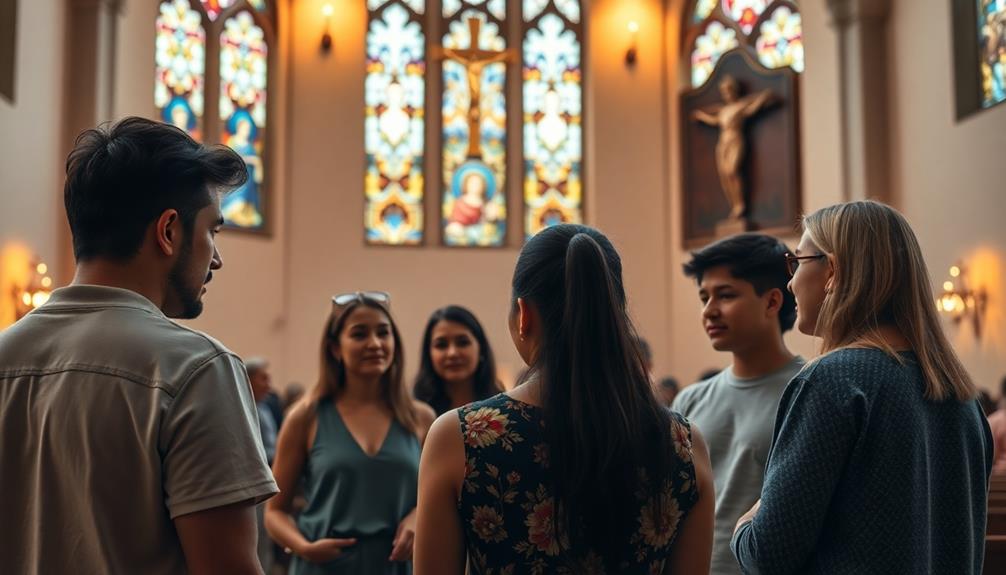
Within the Christian community, perspectives on body piercings can vary considerably. While many denominations discourage piercings based on teachings about modesty and the sanctity of the body, others adopt a more open stance.
For instance, President Gordon B. Hinckley of the LDS Church advised against non-medical piercings, limiting them mostly to minimal ear piercings for women. The Bible doesn't explicitly mention piercings, but passages like Leviticus 19:28 prohibit tattoos and markings, leading to diverse interpretations about what's acceptable.
Some Christians view piercings, including nose studs and rings, as forms of personal expression or cultural significance. They see them as art rather than symbols of rebellion or pagan rituals.
The idea that the body is a "temple of the Holy Spirit" from 1 Corinthians 6:19-20 raises questions about the morality of modifications, prompting discussions on intent and meaning.
Ultimately, church leaders often emphasize love and understanding over judgment. They encourage individuals to reflect on their motivations and the cultural implications of their choices, allowing for a more nuanced conversation about body piercings within the faith.
Insights From Hinduism
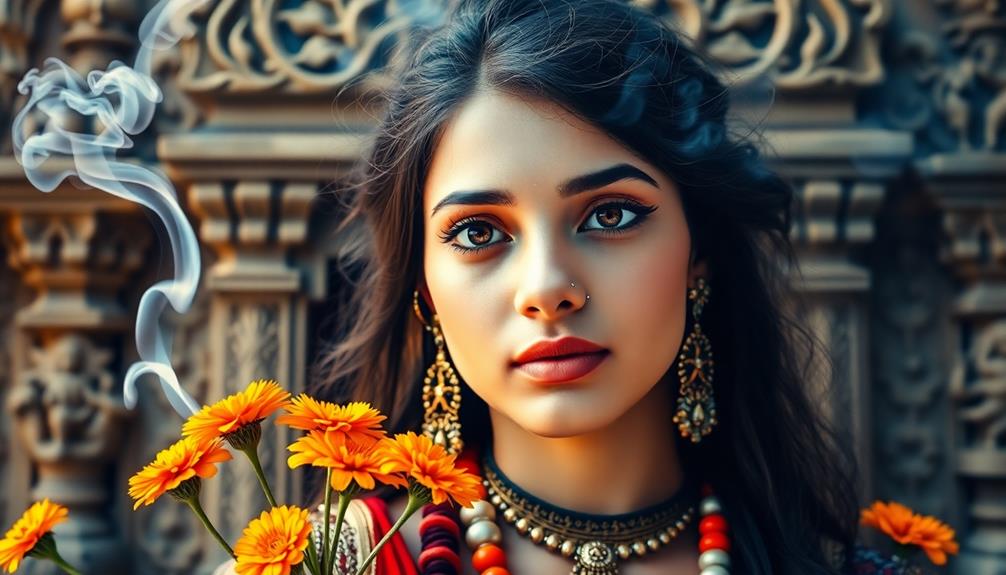
While many cultures embrace body piercings as a form of self-expression, Hinduism offers a rich tapestry of meaning surrounding this practice, particularly with nose piercings. In Hindu culture, nose rings, especially the "nath," symbolize beauty, marital status, and devotion to the goddess Parvati. When you see women wearing these decorative pieces, know they carry deep spiritual significance.
- Nose piercings often mark a rite of passage, enhancing beauty and connecting women to divine energy.
- Silver is the preferred metal for nose rings, believed to purify and harmonize bodily energies.
- Rituals surrounding nose piercing are celebrated, reinforcing cultural identity and community bonds.
- Traditionally associated with married women, the nath represents loyalty and commitment.
- In modern times, nose rings have evolved into fashionable statements for younger generations, blending tradition with contemporary style.
These intricate pieces are more than mere adornments; they embody the spiritual essence of Hindu beliefs while continuing to adapt in today's world.
Embracing nose rings allows you to connect with this vibrant cultural heritage, celebrating both tradition and personal expression.
Views in Islam

Islamic views on body piercings reflect a balance between personal expression and adherence to religious principles. In general, body piercings, especially ear and nose piercings, are accepted in Islam as long as they align with the values of modesty and don't lead to excessive adornment. The Prophet Muhammad's reported approval of women wearing earrings points to a historical acceptance of certain piercings within the faith.
While many scholars argue that piercings are permissible, they often draw a line at tattoos, which are considered haram due to the belief that they alter Allah's creation.
In various Muslim communities, nose rings hold cultural significance, symbolizing beauty and femininity, and sometimes indicating marital status.
It's important to note that the acceptance of body piercings varies widely across different cultures within the Islamic world. Some communities embrace piercings as expressions of identity and beauty, while others adopt a more cautious approach, emphasizing adherence to Islamic principles.
Ultimately, understanding these perspectives can help you navigate the complex relationship between body piercings and Islamic teachings.
Indigenous and Tribal Practices
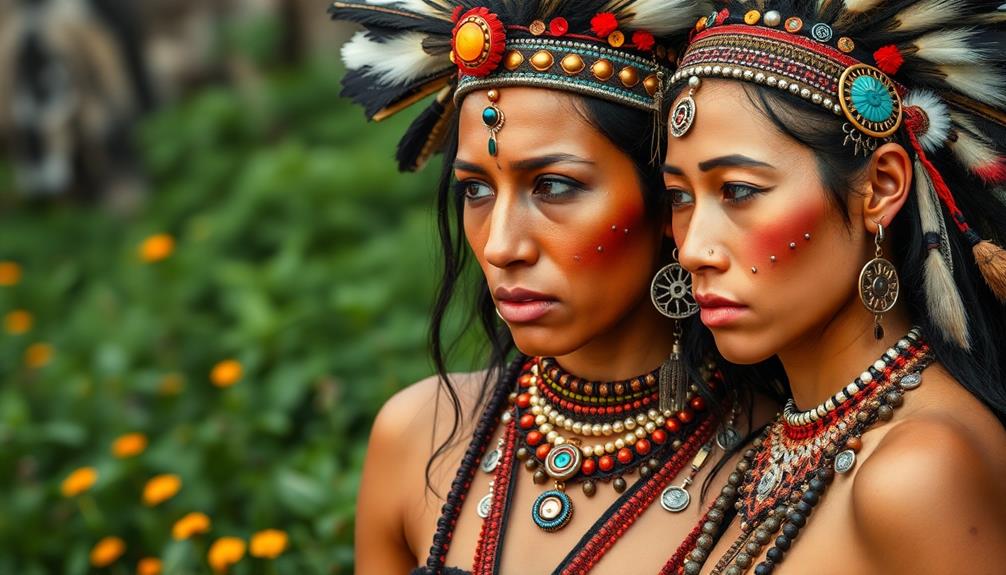
When you explore Indigenous and tribal practices, you'll find that body piercings hold deep historical significance and are often tied to cultural rituals and beliefs.
For many communities, these piercings symbolize important life stages, social status, and connections to ancestry.
Understanding these practices reveals how body modifications serve as powerful expressions of identity and heritage.
Historical Significance of Piercings
Body piercings have long been woven into the cultural fabric of indigenous and tribal societies, marking significant milestones and beliefs throughout history.
You'll find that these adornments often symbolize rites of passage, social status, or spiritual connections. Across various cultures, piercings aren't merely decorative; they serve deeper purposes and meanings.
- The Maasai of East Africa integrate piercings into their identity, often celebrated with rituals.
- Native American tribes have historically used piercings to express cultural identity and honor spiritual beliefs.
- Ancient civilizations, like those of the Indus Valley and Egypt, sported piercings over 4,000 years ago, associating them with beauty and social hierarchy.
- Among indigenous peoples of the Americas, specific piercings connect individuals to their ancestors and spiritual beliefs.
- In certain Australian Aboriginal cultures, men undergo ritualistic piercings during initiation ceremonies, marking their change into adulthood.
Through these practices, piercings have become a profound expression of community, spirituality, and identity, revealing much about the societies that uphold them.
Cultural Rituals and Beliefs
Across various indigenous and tribal cultures, body piercings hold significant meaning as rites of passage that mark important life changes. You might find that these practices signify milestones like adulthood, marriage, or spiritual initiation, deeply embedding individuals within their communities.
In many African cultures, for example, nose and lip piercings connect people to ancestral spirits while also indicating social status or tribal affiliation.
As you explore Native American traditions, you'll see that earlobe stretching serves as a spiritual expression of beauty and connection to nature and the spirit world. These body piercings aren't just adornments; they represent a rich tapestry of identity and heritage.
Each unique design or placement tells a story, reflecting personal beliefs and cultural narratives. Rituals surrounding these piercings often involve elaborate ceremonies, celebrating both the individual and their ties to the community.
This sacred practice highlights the significance of body modifications, transforming them into powerful symbols of personal and cultural identity. When you appreciate these beliefs, you can better understand the profound connection between body piercings and the cultural fabric of indigenous and tribal communities.
Body Modification in Buddhism

In Buddhism, body modifications like piercings are often seen as personal expressions of one's spiritual journey rather than strict religious mandates.
These practices can serve as a reflection of your intentions and spiritual growth. Emphasizing mindfulness, the act of modifying your body can be a way to deepen your understanding of impermanence and the transient nature of existence.
Consider these aspects of body modification in Buddhism:
- Intention Matters: The motivation behind your modification is key; it should align with your spiritual aspirations.
- Cultural Practices: In regions like Thailand and Myanmar, tattoos and piercings have historically served as protective symbols against negative energies.
- Rituals for Empowerment: Some traditions incorporate body modifications into rituals to bolster mindfulness and personal empowerment.
- Temporary Vessels: Recognizing your body as a temporary vessel encourages a deeper connection to your spiritual journey.
- Personal Expression: Each modification can symbolize unique experiences, thoughts, or prayers, adding layers to your spiritual path.
Through these lenses, body modifications become more than just adornments; they transform into meaningful aspects of your spiritual exploration.
Cultural Significance of Piercings

Piercings carry deep cultural significance, serving as powerful symbols of identity and tradition in various societies. You mightn't realize that their origins trace back thousands of years to civilizations like the Indus Valley and Ancient Egypt.
In Hindu culture, for instance, nose piercings, known as "nath," symbolize both beauty and marital status, while in certain African tribes, they connect individuals to ancestral spirits.
If you look at Middle Eastern cultures, you'll find that nose rings are seen as indicators of femininity and marital status, highlighting the social importance of body modification. Across different faiths, the act of piercing often holds spiritual meanings—some traditions link it to devotion, beauty, and essential rites of passage.
Today, the popularity of body piercings in contemporary fashion reflects evolving societal norms, where you can embrace these modifications as symbols of individuality and personal expression.
Whether for cultural heritage or personal style, piercings allow you to communicate something meaningful about who you're and where you come from. In this way, each piercing tells a story, connecting you to a rich tapestry of history and beliefs.
Health Implications and Risks

Evaluating the health implications and risks associated with body piercings is vital for anyone contemplating this form of self-expression.
While piercings can be a beautiful way to showcase your individuality, it's important to be aware of potential complications.
Here are some key points to reflect on:
- Infections can occur if sterile techniques and proper aftercare aren't followed.
- Allergic reactions may arise from certain metals, making hypoallergenic materials like titanium vital.
- The healing time generally ranges from 2 to 6 months, depending on the piercing's location and your individual health.
- Some piercings, like daith piercings, are explored for therapeutic benefits, but scientific backing is still inconclusive.
- Complications such as keloids, or raised scars, can develop, especially in those predisposed to scarring.
Legal Issues Surrounding Piercings

Legal issues surrounding body piercings often spark heated debates about individual rights versus institutional policies. For instance, in 2001, a Costco employee was fired for wearing an eyebrow ring, and the court ruled in favor of Costco, affirming its authority to enforce dress codes. This case illustrates how workplace regulations can clash with personal expression.
In educational settings, the stakes can be even higher. Take the case of a 14-year-old student who was suspended for wearing a nose stud. The ACLU intervened, and a federal judge ultimately sided with the student, emphasizing legal protections for personal expression in schools. Such rulings highlight the ongoing tension between institutional rules and individual rights.
Legal disputes surrounding body piercings often involve workplace dress codes and school policies, reflecting a delicate balance between institutional regulations and personal autonomy.
As court rulings set precedents on discrimination and expression, they influence how future cases will be handled. The legal landscape is continually evolving, mirroring changing societal attitudes towards body modification.
As you navigate this terrain, it's essential to stay informed about both your rights and the policies that may affect you.
Personal Stories and Experiences

Your personal journey with body piercings might reflect deeper cultural significance tied to your faith.
Many people find that their modifications aren't just about aesthetics but symbolize transformative experiences in their lives.
Sharing these stories can highlight the intersection of identity, spirituality, and acceptance in the context of body art.
Personal Journey With Piercings
From an early age, many people find themselves captivated by the world of body piercings, often inspired by the bold expressions of those around them. You might admire the aesthetic qualities of piercings, but your journey goes deeper. Each encounter encourages you to reflect on personal choices and societal perceptions.
- Watching friends flaunt their unique piercings ignites a sense of curiosity.
- Conversations reveal the diverse motivations behind body modifications.
- You notice the mixed reactions from others, ranging from judgment to acceptance.
- Influences from parents shape your understanding of agency and respect in body art.
- Personal stories shared by peers emphasize the importance of thoughtful decision-making.
As you navigate this landscape, you learn that piercings can symbolize much more than just decoration. They often carry personal significance, whether it's a statement of individuality or a mark of a life experience.
Engaging with others reveals the complexities of their choices, urging you to cultivate compassion and understanding. Ultimately, your own experiences with piercings highlight the journey of self-expression and the importance of respecting different perspectives on body art.
Cultural Significance in Faith
As you explore the deeper meanings behind body piercings, you might find that various cultures intertwine faith and body art in profound ways.
In Hindu culture, for example, the "nath" or nose piercing serves as a powerful symbol of beauty and marital status, deeply connected to the goddess Parvati. This connection showcases how spiritual beliefs can elevate the significance of body modifications.
Historically, nose rings have adorned royalty, indicating bravery and social status across civilizations, showcasing their cultural weight.
In Islamic traditions, nose rings highlight femininity and beauty, often tied to personal identity and cultural expression.
In certain African tribes, nose piercings are more than just adornments; they act as ritualistic connections to ancestral spirits, reinforcing their spiritual and communal importance.
Today, you might notice that many individuals embrace nose rings as fashionable accessories, merging these traditional meanings with modern self-expression.
As you reflect on these diverse perspectives, you'll see how body piercings not only enhance personal style but also embody rich cultural narratives that resonate with faith and identity.
Each piercing tells a story, connecting you to a broader tapestry of human experience.
Transformative Experiences Through Modification
Body piercings often serve as powerful catalysts for transformation, with many people sharing profound personal stories that illustrate their journeys. For you, a body piercing mightn't just be an aesthetic choice; it can symbolize a significant life change or a rite of passage.
When you modify your body, you reclaim agency over your identity, often leading to heightened self-confidence and personal growth.
Consider these transformative aspects:
- Expression of Identity: A piercing can be a bold statement of who you're or who you aspire to be.
- Cultural Connection: You might find that your piercings deepen your ties to your cultural or spiritual heritage, fostering a sense of belonging.
- Rites of Passage: Each piercing can represent a milestone, marking the change to a new chapter in your life.
- Self-Empowerment: Challenging societal norms through body modification can be a liberating experience, allowing you to embrace your individuality.
- Healing Journey: The process of healing from a piercing can reflect emotional growth, leading to greater acceptance and self-love.
Ultimately, these experiences highlight the profound impact that body modifications can have on your life.
Frequently Asked Questions
What Religions Don't Allow Piercings and Tattoos?
Some religions discourage piercings and tattoos due to beliefs about body sanctity. You'll find that groups like Orthodox Judaism and certain Christian denominations often oppose these practices, viewing them as contrary to their teachings.
What Is the LDS Stance on Piercings?
Steering through the waters of personal expression, you'll find the LDS stance on piercings leans towards minimalism. They encourage modesty, allowing only one pair of simple earrings for women, promoting love and understanding over judgment.
What Do Muslims Think About Piercings?
Muslims often have varied opinions on piercings. You might find some embracing them as a form of beauty, while others prefer to avoid them, emphasizing modesty. Cultural influences play a significant role in shaping these views.
How Do Catholics View Piercings?
Imagine a garden, where flowers bloom in diverse colors. As a Catholic, you can embrace body piercings like vibrant petals, as long as your intentions reflect respect and beauty, honoring your body as a sacred temple.
Conclusion
In the tapestry of beliefs surrounding body piercings, you'll find a rich blend of tradition, spirituality, and personal expression. Each faith offers a unique lens through which to view this art, revealing more than just a simple adornment. Whether it's a rite of passage or a personal statement, these adornments whisper stories of identity and culture. So, as you navigate your own choices, remember the deeper meanings that lie just beneath the surface, waiting to be discovered.





